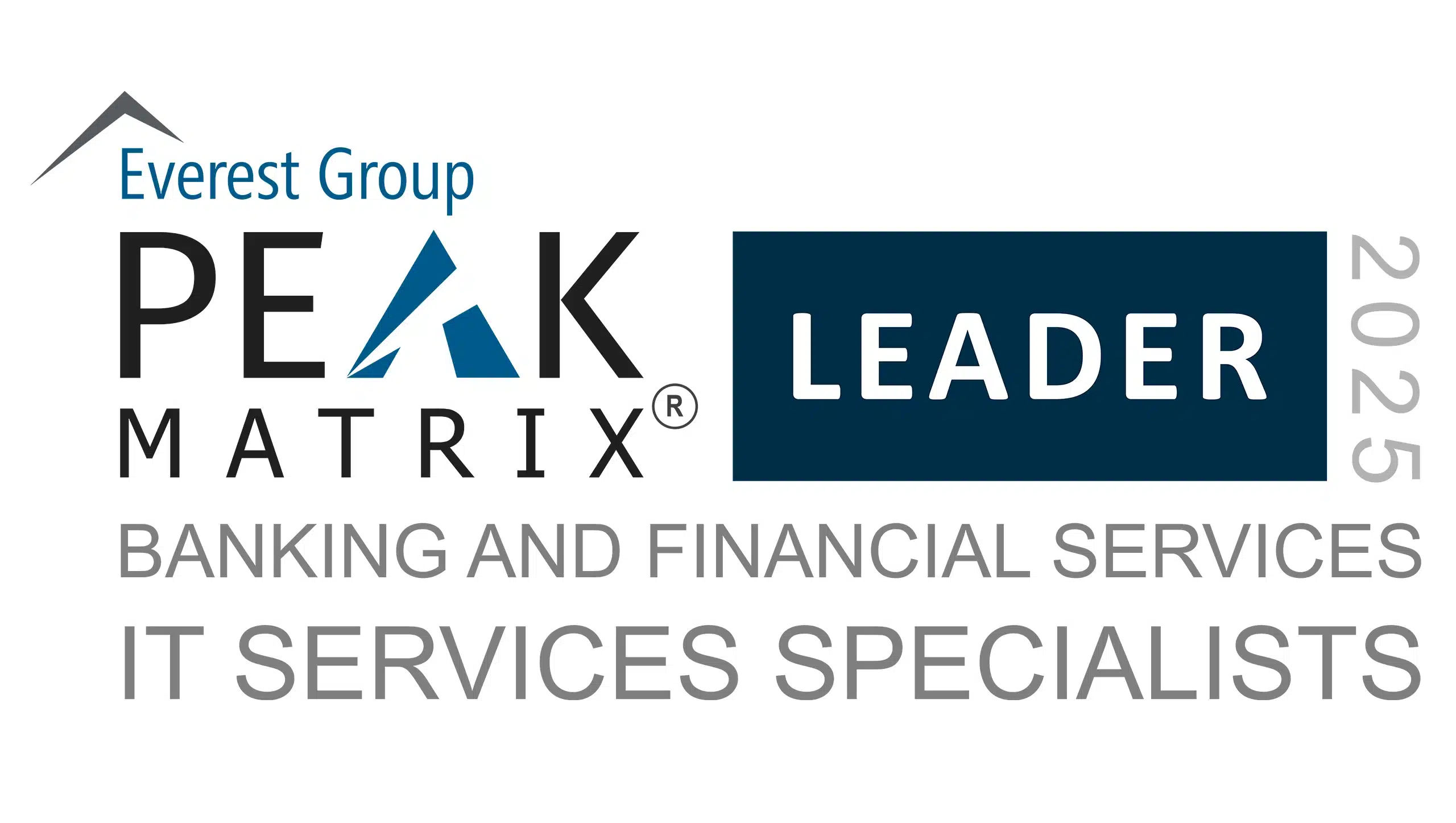The 2025 Payments Canada Summit, themed Innovate-Collaborate-Transform, is May 6 - 8 at the Automotive Building in Toronto, Ontario. This forum is considered Canada’s premier payments event, bringing together more than 1,900 participants to discuss innovation, challenges and opportunities in this dynamic global industry. Financial institutions, payments and technology service providers, retailers, monetary and regulatory professionals will connect, learn, and share ideas through presentation and networking sessions. The key topics relate to improving outcomes in digital payments, consumer experiences, risk and fraud mitigation, cross-border and other payments policies.
Connect with three of our banking and financial services (BFS) technology experts at the Summit to discuss digital transformation and payment system modernization: Subramanian Viswanathan, Associate Vice President, Mehul Shah, Associate Director, and Suneela Katikala, Senior Client Partner.
The advanced technologies that Iris delivers – across AI / Generative AI, Application Development, Automation, Cloud, DevOps, Data Science, Enterprise Analytics, and Integrations - are driving innovations in the payments sector every day. Our experienced global team helps financial institutions and payments providers enhance operations, security, scalability, cost-efficiency, and compliance in the myriad platforms, processes and systems supporting their domestic and international payments transactions. Iris has served BFS clients for more than 30 years and was named a Leader in BFS IT Services by Everest Group in its PEAK Matrix® Assessment 2025. Iris is also PCIDSS 4.0-certified to ensure robust cyber security and compliance for our clients involved in payment card processing or that store, process, or transmit cardholder data and/or sensitive authentication data.
Contact our team at the Summit or anytime at Iris Software Banking and Financial Services to learn more about our future-ready technology solutions. You can also read our Perspective Papers for insights on Real-world Asset Tokenization, leveraging Generative AI for Asset Tokenization and the state of Central Bank Digital Currency.
Contact
Our experts can help you find the right solutions to meet your needs.
Get in touchJoin us at the InsurTech Hartford Symposium

The InsurTech Hartford Symposium 2025 is April 29 and 30 at the Connecticut Convention Center. The focus of the forum’s numerous speakers, sessions, and attendees is on innovation, and how it’s driving digital transformation and growth in the insurance industry.
As most insurers’ strategic objectives include the improvement of product line innovation, personalized customer experience, operational efficiency and security, and compliance and risk management, partnering with experienced technology service providers like Iris Software is critical to their business success.
At the Symposium, insurance leaders and innovators can meet Venkat Laksh, Senior Client Partner and seasoned InsurTech pro, to learn how insurers are applying our advanced software engineering solutions, in Application Development, Automation, AI / Generative AI, Data Science, Enterprise Analytics, and Cloud, to modernize tech infrastructure, optimize business competencies and secure their digital futures.
Connect with Venkat at the InsurTech Hartford Symposium 2025 for beneficial conversation on the latest InsurTech innovations and trends. You can also contact Venkat and our InsureTech team and get more information about our InsurTech solutions and services here: Insurance Technology Services | Iris Software.
Contact
Our experts can help you find the right solutions to meet your needs.
Get in touchEverest Group Names Iris Software a Leader in BFS IT Services
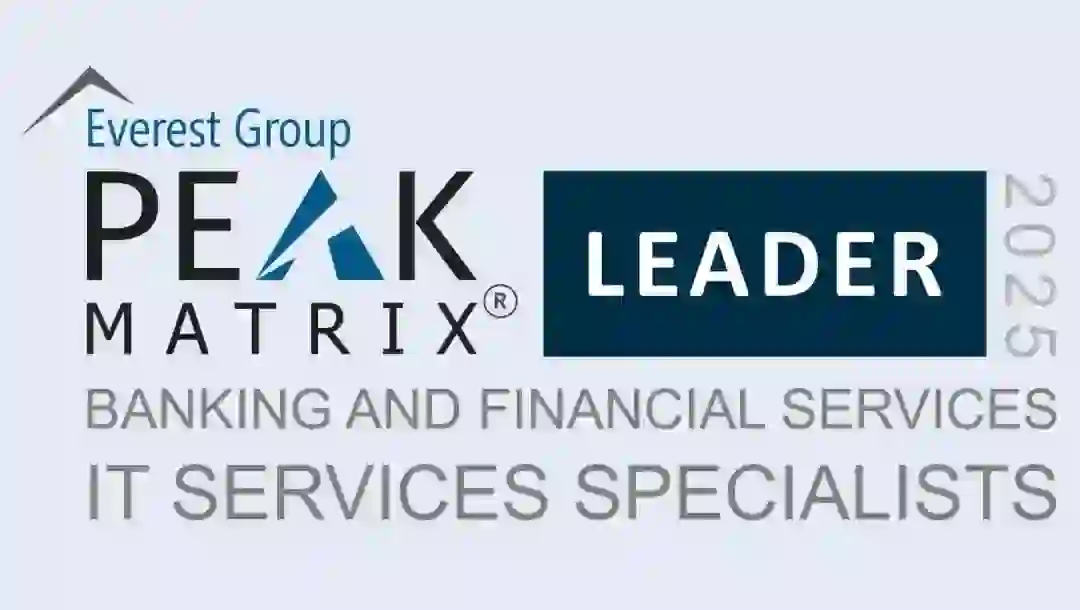
Iris is proud to be recognized as a Leader in the inaugural Banking and Financial Services (BFS) IT Services Specialists PEAK Matrix® Assessment 2025 by Everest Group. This assessment is the first-ever for this category, and for Iris!
We were evaluated along with 29 other BFS IT service providers on our market presence, value delivery, strategic vision, innovation, technical capabilities, functional knowledge, and buyer references.
Pranati Dave, Practice Director, Everest Group, stated, “Iris Software’s expertise in capital markets and risk and compliance transformation, combined with a skilled talent pool and a strong reputation for execution, continues to drive its success with top-tier financial institutions. Clients have consistently recognized Iris for its low attrition, engineering rigor, and collaborative delivery model. Its investments in ML Ops, AI/ML, and modernization of cloud-based data and risk platforms have helped Iris earn a Leader recognition on Everest Group’s inaugural Banking and Financial Services (BFS) IT Services Specialists PEAK Matrix® Assessment 2025.”
Sunil Puri, President, Iris Software, stated, “We are honored to be named a Leader in BFS ITS by Everest Group. During our more than 30 years of growth in the BFS and other sectors, including Capital Markets & Investment Banking; Brokerage, Wealth & Asset Management; Commercial & Corporate Banking; Risk & Compliance; Retail Banking & Payments; Anti-Money Laundering & Know-Your-Customer; Insurance; Manufacturing; Logistics; Life Sciences and Professional Services, we have been a long-term partner in our clients' transformation journeys - helping to build, integrate and modernize complex platforms, systems, and applications.”
When IT matters most, clients call upon Iris to provide mission-critical software engineering and advanced application development services across AI/Generative AI, Automation, Cloud, Data & Analytics, Integrations, DevOps and Quality Engineering.
We remain steadfast in our vision of being our clients’ most trusted technology partner and thank our associates for their dedication and innovation.
Learn more about our BFS services, value proposition and client success stories and contact our team today.
Disclaimer
Licensed extracts taken from Everest Group’s PEAK Matrix® Reports, may be used by licensed third parties for use in their own marketing and promotional activities and collateral. Selected extracts from Everest Group’s PEAK Matrix® reports do not necessarily provide the full context of our research and analysis. All research and analysis conducted by Everest Group’s analysts and included in Everest Group’s PEAK Matrix® reports is independent and no organization has paid a fee to be featured or to influence their ranking. To access the complete research and to learn more about our methodology, please visit Everest Group PEAK Matrix® Reports.
Contact
Our experts can help you find the right solutions to meet your needs.
Get in touchFaster go-to-market with no-code API solutions



Client
A leading home insurance enterprise
Goal
Expedite go-to-market strategy by integrating the policy admin system with multiple external services while ensuring scalability, security, and compatibility
Tools and Technologies
Unqork, API gateways, REST APIs, SOAP APIs
Business Challenge
The client sought to expedite its go-to-market strategy by integrating its Policy Admin system with multiple external services.
The objective was to swiftly implement these integrations while maintaining scalability, security, and compatibility with external services, thereby accelerating the organization's time-to-market for new products.

Solution
- Efficiently created APIs and seamlessly integrated them with the existing low-code/no-code enterprise application
- Utilizing pre-built and pre-exposed API gateways, the team developed highly functional and adaptable APIs without manual coding
- Unqork facilitated the creation of both REST and SOAP APIs, seamlessly integrating with external APIs, ensuring optimal data access and distribution capabilities

Outcomes
- 40% faster time-to-market, enabling quicker product launches
- 25% increase in customer satisfaction due to improved system flexibility
- Enhanced scalability and security with seamless API integrations

Our experts can help you find the right solutions to meet your needs.
LIMRA 2025 Workplace Benefits Conference

The LIMRA (Life Insurance Marketing and Research Association) 2025 Workplace Benefits Conference takes place April 23-25, 2025, at the Encore Boston Harbor in Boston, MA. With this year’s theme, Pathways to Growth, industry leaders and participants will examine the business and technology trends affecting the North American workplace benefits market. Speakers and attendees, primarily carriers and brokers of life, health, and related insurance coverage, and providers of employee benefits and technology solutions, will explore strategies for growth while addressing shifting consumer needs, the latest digital tools and technologies, and an increasing focus on innovation, outcomes and collaboration.
Venkat Laksh, Iris’ Global Lead – Insurance, and Senior Client Partner, will attend this forum. Iris provides leading insurance companies with advanced InsurTech services and solutions, including Software and Quality Engineering, AI/ML/Generative AI, Application Modernization, Automation, Cloud, Data Science, Enterprise Analytics and Integrations. These companies are applying next-generation, emerging technology through Iris to ensure their enterprises are future-ready, scalable, secure, cost-efficient, and compliant.
Talk about your digital priorities with Venkat at the LIMRA 2025 Workplace Benefits Conference and connect with our InsurTech team anytime to advance your digital transformation goals: Insurance Technology Services | Iris Software.
Contact
Our experts can help you find the right solutions to meet your needs.
Get in touchEnterprise-Grade DevOps for Scalable Blockchain DLT



Client
A leading provider of real-world asset (RWA) tokenization, digital currency, and interoperability solutions to the world’s largest financial players
Goal
To optimize blockchain DLT platforms for scalability, resilience, and seamless operations through enterprise-grade DevOps and SRE practices
Tools and Technologies
R3 Corda 5, Azure, AWS, G42, Docker, Kubernetes, Helm Charts, Terraform, Ansible, GitHub Actions, Azure DevOps, Jenkins, Prometheus, Grafana, Slack Integration
Business Challenge
Complex Multi-Node Deployments require a mechanism to upgrade CorDapps, notaries, and workers across network participants without downtime or compatibility issues. Meanwhile, security and compliance risks demand strict access controls, network segmentation, and security hardening to protect Corda nodes and ledger operations.
For infrastructure scalability and automation, an efficient approach was required for onboarding new participants and managing network topology across cloud environments. The lack of a Real-Time Monitoring system necessitated the detection of transaction failures, tracking node health, and providing proactive alerts.
To address security vulnerabilities, continuous scanning and security enforcement across CorDapps, containerized nodes, and CI/CD pipelines were required.

Solution
- Enabled zero-downtime CorDapp deployments with automated rollback and stateful upgrades, ensuring stability and ledger integrity
- Secured Corda nodes with RBAC, network segmentation, and security hardening, while optimizing autoscaling for dynamic ledger workloads
- Automated Corda network topology and participant onboarding using modular Terraform & Ansible configurations, ensuring scalability and repeatability
- Implemented real-time monitoring with Prometheus & Grafana, with Slack-based alerts for transaction failures and node health anomalies
- Ensured high availability and auto-healing for Corda network nodes and ledger operations
- Integrated DevSecOps with automated vulnerability scanning for CorDapps, containerized nodes, and CI/CD pipelines

Outcomes
- Accelerated blockchain deployment cycles through CI/CD automation increased deployment frequency by 40% and reduced failures by 60%
- Optimized kubernetes workloads for Corda 5 through efficient resource management resulted in 15% cost savings and improved ledger performance
- Scalable & secure blockchain infrastructure reduced manual intervention by 30%, enabling seamless scaling of Corda network participants
- Proactive incident management for DLT networks through real-time monitoring cut response time by 50% for blockchain issues, ensuring high availability
- Automated workflows accelerated development cycles by 25%, enhancing collaboration across blockchain and DevOps teams

Our experts can help you find the right solutions to meet your needs.
Enhanced executive dashboard for streamlined reporting
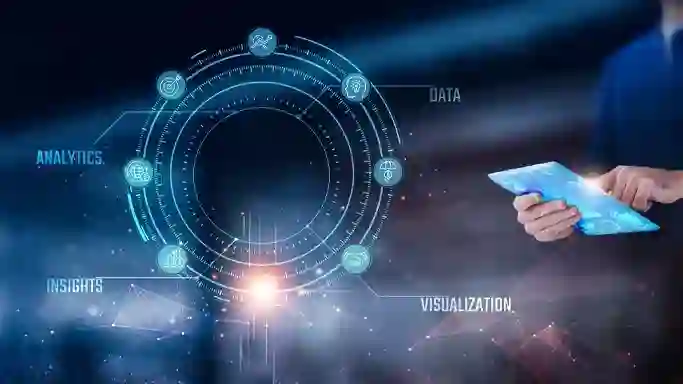


Client
A leading specialty property & casualty insurer
Goal
Redesign the existing executive dashboard to improve user experience, streamline access to reports, and reduce manual efforts in onboarding new users and reports
Tools and Technologies
Azure, UI/UX enhancements, centralized reporting hub, SSO integration
Business Challenge
The client aimed to revamp its executive dashboard to address usability concerns and enhance functionality. Users found the system difficult to navigate due to inconsistent flow and poor design. Essential information was not easily accessible in one place, leading to inefficiencies.
Additionally, onboarding a new report or user required extensive manual effort, including database updates, script creation, and multiple service tickets, resulting in turnaround times of 1-2 days.

Solution
As a strategic solution partner, Iris reimagined the executive dashboard with a focus on user experience and operational efficiency. Key enhancements included:
- Intuitive design improvements for seamless navigation and accessibility
- Expanded functionalities such as search, sorting, filtering, favorites, most reviewed, access requests, user management, notifications, and audit trail
- Development of a centralized reporting hub that provides a single access point for all Hudson reports with a mobile-friendly interface
- Deployment on Azure for seamless accessibility and performance optimization

Outcomes
- Improved customer experience and satisfaction through a user-friendly interface
- Onboarding time for new users and reports reduced to 30 minutes
- Simplified report access with SSO integration and minimal clicks required to retrieve information
- Easier discovery and navigation of reports, with enhanced filtering and search capabilities
- Personalized user views with notifications for schedule delays or report errors
- Introduction of an admin section enabling UI-based user creation, notifications, and report access management

Our experts can help you find the right solutions to meet your needs.
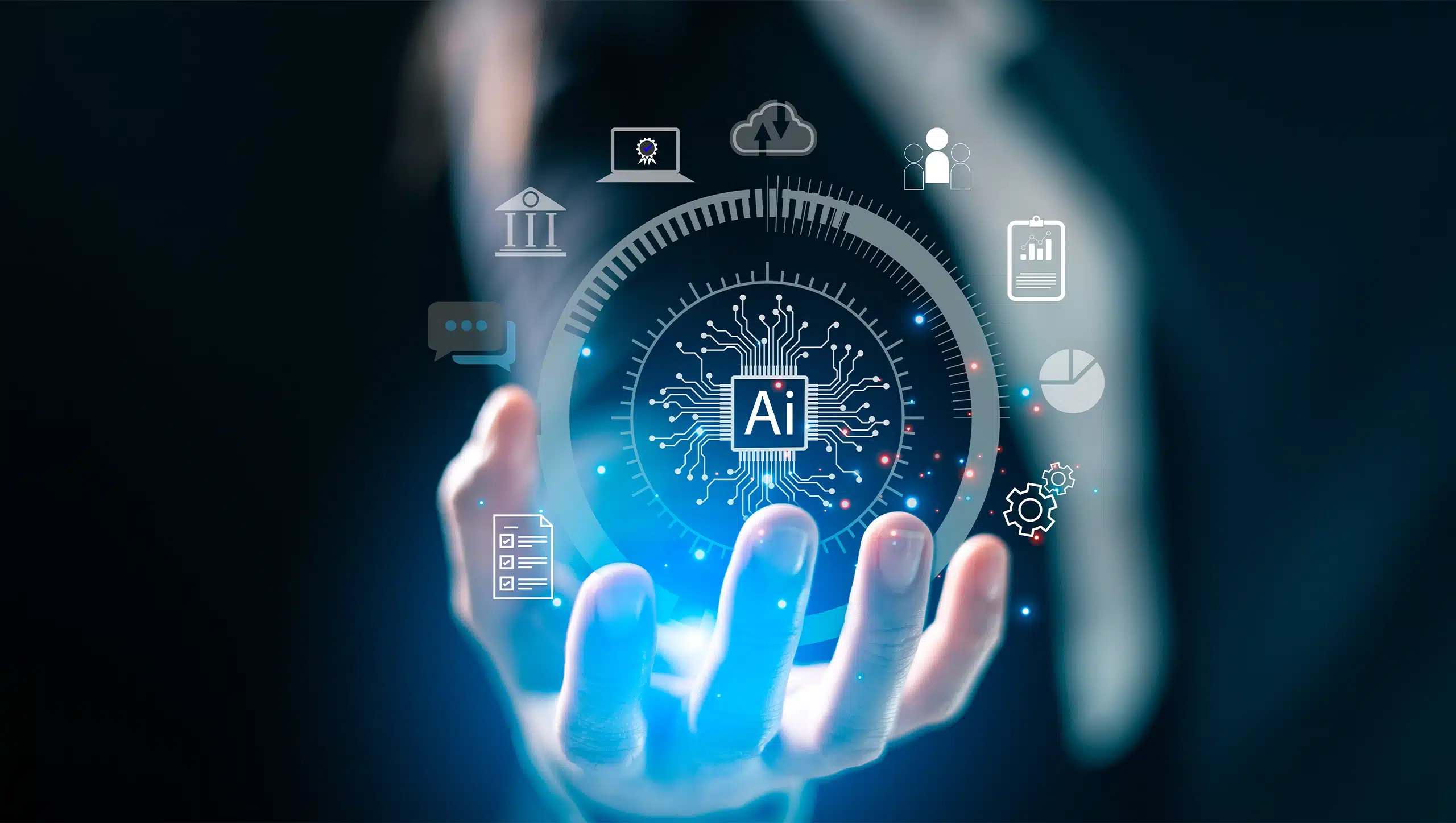
Leveraging Generative AI for asset tokenization
Enhance efficiency, security, and user experience by leveraging Generative AI in DLT-based asset tokenization.
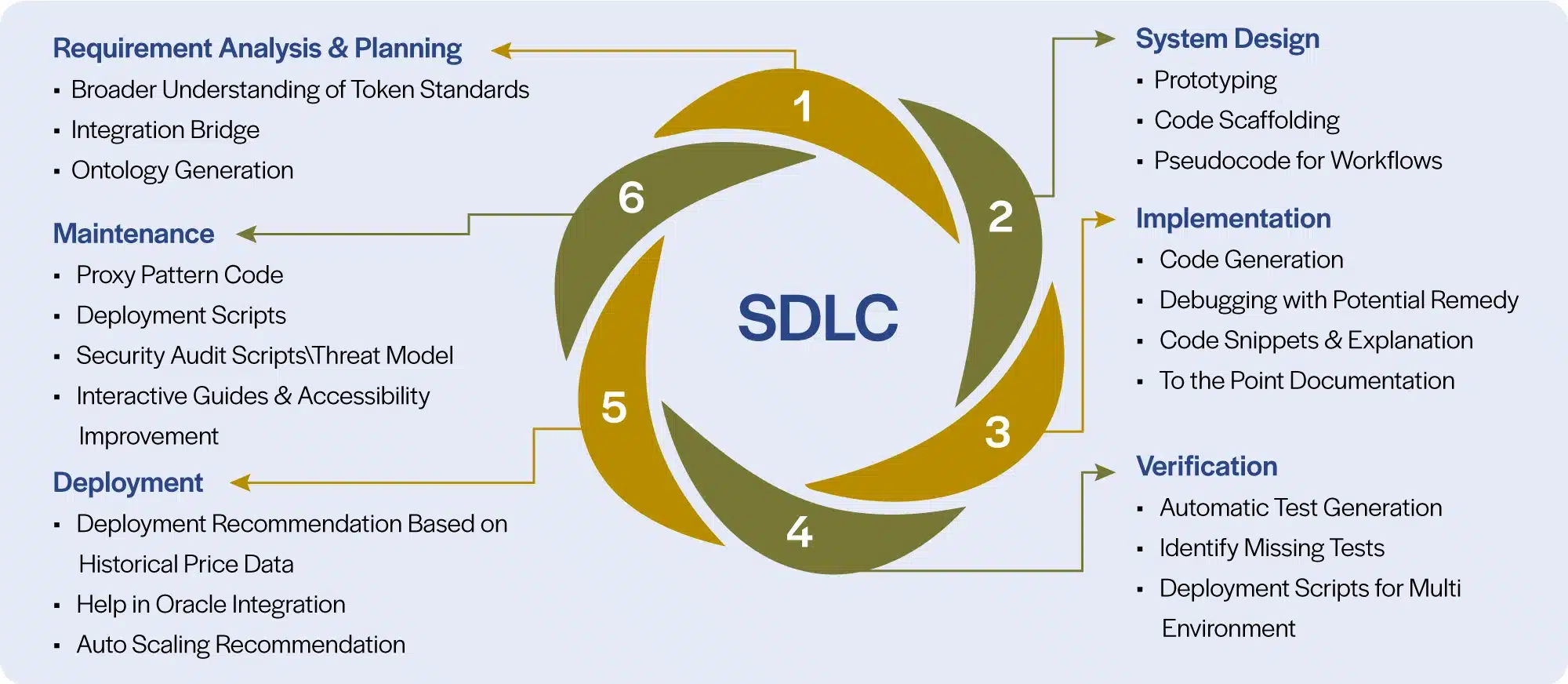
Asset tokenization is converting ownership rights of an asset that has traditionally resided within legacy or traditional systems into a digital token on a Distributed Ledger Technology (DLT) platform. This transformation enables numerous benefits, including fractional ownership, 24/7 availability, easier transferability, and enhanced liquidity.
Developing and deploying a comprehensive asset tokenization system on DLT is a full-scale software development endeavor encompassing all SDLC phases. Every phase presents challenges, including technology complexities, evolving business use cases, non-standardization, scarcity of resources, and reluctance to adopt.
As asset tokenization emerges as an essential solution for financial institutions, the integration of Gen AI amplifies customer value. Institutions can achieve unprecedented efficiency, accuracy, and innovation by leveraging Gen AI's capabilities throughout the asset tokenization process.
Gen AI is set to play a pivotal role in improving asset tokenization by contributing to the different phases of its implementation. Gen AI can assist both in the implementation phase and beforehand, as it can help produce synthetic financial data that closely resembles real market conditions conduct stress tests and other simulations, helping to strengthen the platform.
Read our Perspective Paper for more insights into the key phases, benefits and the road map to asset tokenization.
Contact
Our experts can help you find the right solutions to meet your needs.
Get in touchSeamless self-service portal integration with FINEOS



Client
A leading insurance provider specializing in absence management solutions
Goal
Migrate data and services from a legacy platform to FINEOS while ensuring a seamless user experience and improved system reliability
Tools and Technologies
Spring Boot, APIGEE, FINEOS AdminSuite, Splunk
Business Challenge
The client aimed to migrate data and services from its legacy Group Benefits Platform Transformation (GPT) system to FINEOS AdminSuite while maintaining a consistent user interface, improving data accuracy, and ensuring minimal downtime.
The system also required enhanced automation and monitoring to streamline absence creation for agents and employees.

Solution
- Developed APIs to integrate the legacy system with FINEOS AdminSuite for seamless absence management
- Designed an interactive self-service portal, allowing users to efficiently manage absences
- Used Spring Boot for service development and APIGEE for API integration
- Implemented Splunk for real-time monitoring and log analysis to enhance system reliability

Outcomes
- Increased system scalability, reliability, and data accuracy
- Enhanced user experience with a modern, intuitive interface
- Reduced time taken to create absences, improving efficiency for agents and employees
- Faster development cycles and better monitoring, ensuring proactive issue resolution

Our experts can help you find the right solutions to meet your needs.
Streamlining policy administration with low-code development



Client
A leading home insurance enterprise specializing in policy administration solutions
Goal
Develop policy administration applications for partner insurance carriers with seamless third-party and home-grown app integration
Tools and Technologies
Low-Code/No-Code Platform, AWS, Agile Development, Containerization
Business Challenge
The client needed a scalable policy administration solution to support insurance carriers, integrate third-party applications, and enhance policy issuance and settlement.
The goal was to accelerate the go-to-market process for partners and agents while delivering premier services for competitive pricing and superior policy coverage.

Solution
- Designed and developed a policy administration platform using a Low-Code/No-Code application development platform on AWS
- Built three Agile Pod-based teams, each containing five members for rapid iteration and development
- Leveraged containerized development, ensuring each service had its own lifecycle for enhanced flexibility and scalability
- Established weekly release plans with feature flags to enable controlled functionality deployment in production once the business was ready to adopt

Outcomes
- 200% growth in policy issuance
- Faster onboarding for agencies and agents
- Improved efficiency and scalability in policy administration
- Accelerated go-to-market for insurance partners and agents

Our experts can help you find the right solutions to meet your needs.
Industries
Company

Bring the future into focus.



